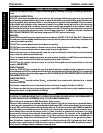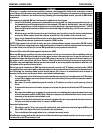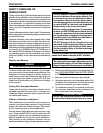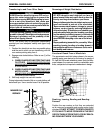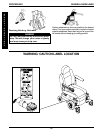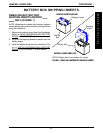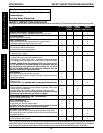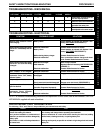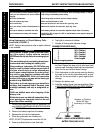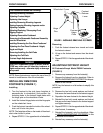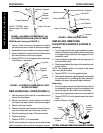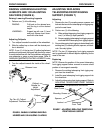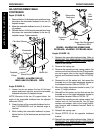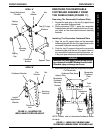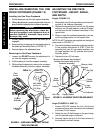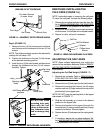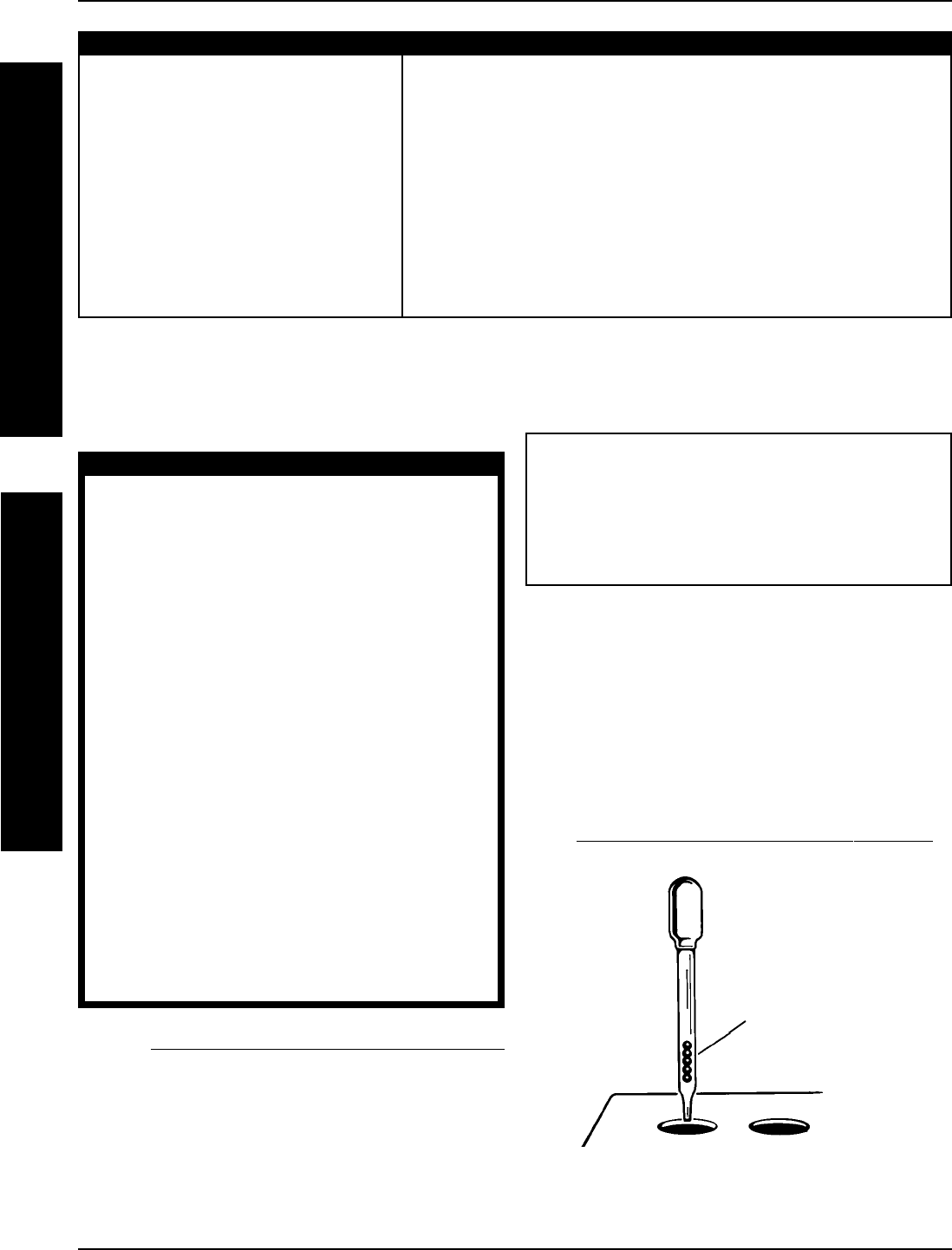
14
6. Tap lightly to remove air bubbles.
7. Number of floating balls indicates charge.
NUMBER OF FLOATING BALLS
0 Discharged
1 25% Charged
2 50% Charged
3 75% Charged
4 100% Charged
* 5 Overcharged
* Check charging system.
8. Flush the liquid back into the same cell after reading
the float. Repeat this step until all cells have been
properly read. A shorted or dead cell can be detected
when it is the only cell that doesn’t charge.
9. Flush hydrometer in cold running water by allowing
the water to rise into the hydrometer as far as pos-
sible. Do this several times to guard against burn
damage.
10. Replace the battery caps.
11. Install the battery boxes onto the wheelchair. Refer
to
INSTALLING/REMOVING BATTERY BOXES in
PROCEDURE 11 of this manual.
Using Hydrometer to Check Battery Cells
(Lead Acid) (FIGURE 1)
NOTE: Perform this procedure when a digital voltmeter
is not available.
WARNING
NEVER smoke or strike a match near the batter-
ies. If the caps of battery cells are removed,
NEVER look directly into them when charging bat-
tery.
The use of rubber gloves and safety glasses is rec-
ommended when testing the battery cells.
When reading a hydrometer, DO NOT allow any
liquid to come in contact with your eyes or skin. It
is a form of acid and can cause serious burns,
and in some cases, blindness. If you do get bat-
tery acid on you, flush the exposed areas with
cool water IMMEDIATELY. If the acid comes into
contact with eyes or causes serious burns, get
medical help IMMEDIATELY.
The battery acid can damage your wheelchair,
clothing, and household items. Therefore, take
readings cautiously and only in designated ar-
eas.
ONLY use distilled water when topping off the
battery cells.
Most batteries are not sold with instructions. How-
ever, warnings are frequently noted on the cell
caps. Read them carefully.
1. Remove the battery boxes from the wheelchair. Re-
fer to
INSTALLING/REMOVING BATTERY BOXES
in PROCEDURE 11 of this manual.
2. Remove the battery caps from the battery.
3. Squeeze the air from the hydrometer.
4. Place the hydrometer into a battery cell.
NOTE: DO NOT fill hydrometer more than 3/4 full.
5. Draw up sufficient acid to cover float balls.
FIGURE 1 - USING HYDROMETER TO CHECK
BATTERY CELLS (LEAD ACID)
Number of Floating
Balls Will Vary
According to Charge
Don’t use randomly chosen batteries/chargers.
Don’t put new batteries into service before
charging.
Don’t tip or tilt batteries.
Don’t use ordinary tap water.
Don’t overfill cells.
Don’t use uneven levels of distilled water in
cells.
Don’t tap on clamps or terminals with tools.
Don’t mismatch your battery and chargers.
Follow recommendations in this manual when selecting a battery or charger.
Fully charge a new battery before using.
Use a lifting strap to remove, move or install a battery.
ONLY use distilled water to refill.
Keep the liquid level in the cells at the “split ring” level.
Maintain the liquid in all cells at the “split ring” level.
Push battery clamps onto terminals. Spread clamps wider if necessary.
Use ONLY a GEL charger for a GEL or sealed battery and a regular charger for
regular batteries.
DON’T DO
PROCEDURE 2 SAFETY INSPECTION/TROUBLESHOOTING
T
R
O
U
B
L
E
S
H
O
O
T
I
N
G
S
A
F
E
T
Y
I
N
S
P
E
C
T
I
O
N



